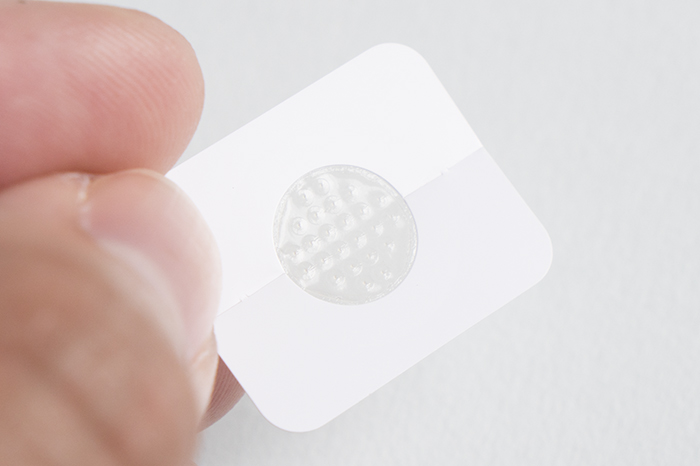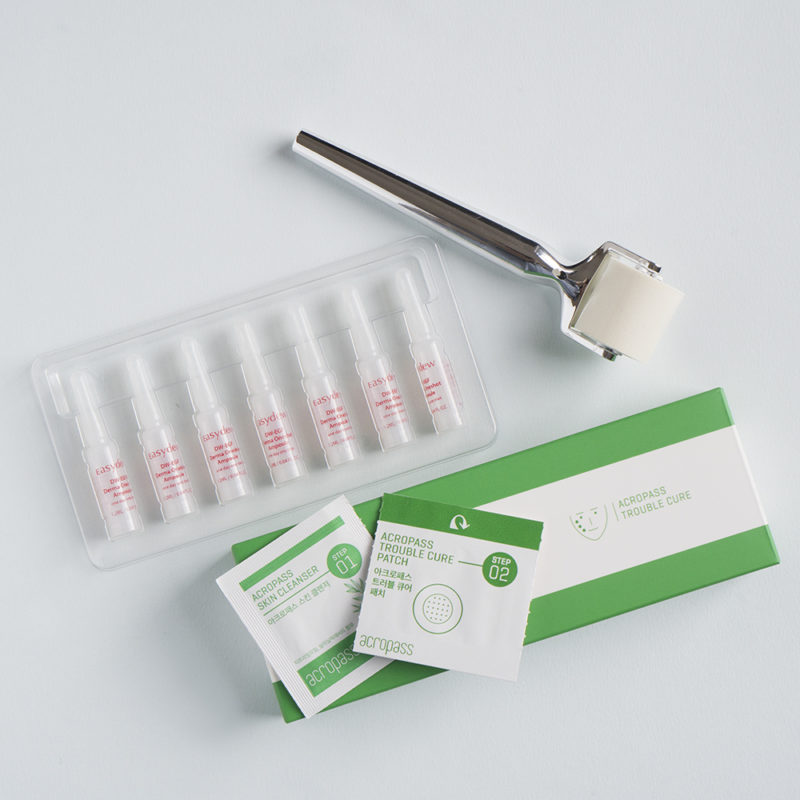Tiny needles that dissolve into skin might just be the secret to clearing up your acne or smoothing your fine lines. Intrigued? So are we, which is why we asked dermatologists to provide some insight on dissolving microneedle technology and to share their expert opinions on the trend.
If you’ve been reading The Klog this week, you know that we’re a little more than obsessed with products that feature dissolving microneedle technology.
As a refresher, dissolving microneedles are made of crystallized serum and penetrate the epidermis, delivering ingredients deep into skin and thus providing more effective results.
The non-invasive technology is gaining popularity in Korea where it’s being used in acne treatments (like the Acropass Trouble Cure), undereye patches and as a gentler alternative to traditional derma rolling (see the Easydew DW-EGF Derma Needle Program). Thankfully we can finally get our hands on some of those products stateside.

Massachusetts-based derm Dr. Papri Sarkar says of the technology, “If the [microneedles] dissolve properly and have the ingredients you want in a serum, it’s a good way to get ingredients where you want them to go.”
In a clinical study conducted by Easydew, the brand found that its weekly derma roller treatment (which contains dissolving microneedles) was three times more effective at treating deep eye wrinkles after four weeks than a topical anti-aging ampoule alone. The study also showed a noticeable improvement in cheek lifting.
In addition to boosting the efficacy of serums, the pros like that the dissolving microstructures are sanitary and gentle on the skin.
“They’re essentially single use so there’s not the same chance of infection as there often is with other forms of microneedling,” says Dr. Sarkar. “Because the depth of the dissolving microneedles seem to be relatively shallow in comparison as well, it’s less likely to cause damage and hyperpigmentation.”
Of course, no product or new technology is without potential hazards and skeptics.
While dissolving microneedles are designed to be non-irritating, according to Dr. Zakia Rahman, a clinical professor of dermatology at Stanford University, “anything that breaks down the skin’s protective barrier and introduces foreign substances into it can lead to infection or an allergy.”
Dr. Sarkar adds that because the microstructures are delivered beneath the surface of the skin, an allergic reaction to an ingredient could be amplified. “And if the microstructures don’t dissolve properly,” she adds, “you can get something called a foreign body reaction where the skin will wall off the product because it thinks it’s an invader and may cause a small cyst to form.”
It is always important to look at all ingredients in a product before use and to know what works – and what doesn’t – for your skin.
When looking at the Acropass Trouble Cure in particular she notes: “Traditional microneedling can penetrate to several millimeters under the skin to deliver ingredients to the deep dermis. I cannot say with certainty that the small microneedles in this system will reach the depth necessary to deliver the active ingredients.”
However, she and the other skin experts we talked to do find the concept promising.
“If the depth of the dissolvable microneedles as well as the active ingredients in the microneedles could be customized to the skin condition being treated, this could be the next wave of skincare and dermatologic treatments,” says Dr. Chang. Dr. Sarkar can see the technology successfully being used in products that treat acne, fine wrinkles and to provide hydration.
Fingers crossed that sheet masks with dissolving microneedles are on the horizon!
